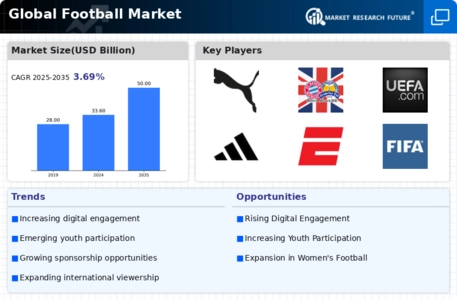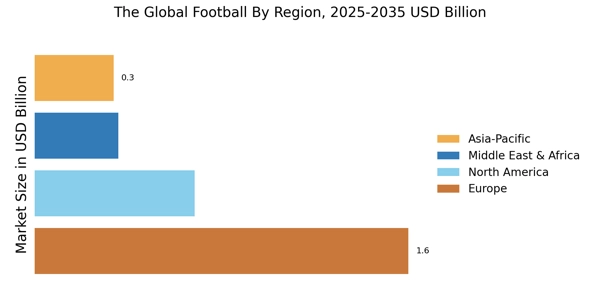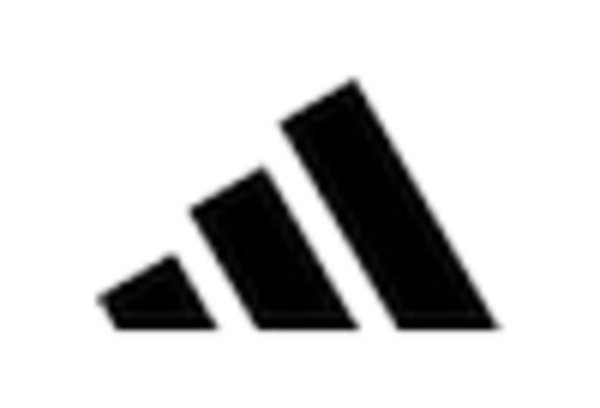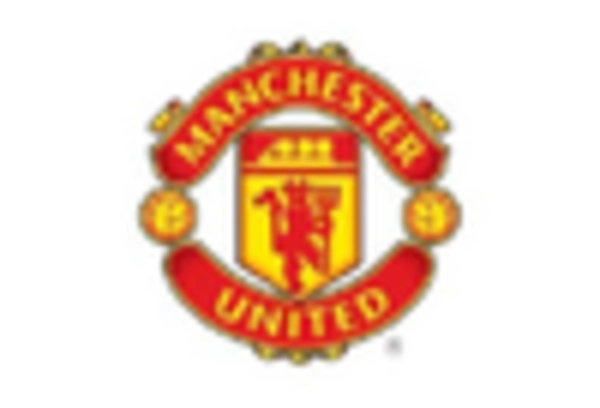Youth Development Programs
Investment in youth development programs is a critical driver for the football market. Many clubs are increasingly focusing on nurturing young talent through academies, which has shown to yield long-term benefits. Reports indicate that clubs with robust youth systems can save up to 50% on player acquisition costs by promoting homegrown talent. This strategy not only enhances the competitive edge of clubs but also fosters a deeper connection with local communities. As youth participation in football continues to rise, the market is likely to see a sustained influx of new players and fans, further solidifying its growth.
Emerging Markets and Global Expansion
Emerging markets are playing a pivotal role in the expansion of the football market. Countries in Asia, Africa, and South America are witnessing a growing interest in football, driven by increased access to international leagues and tournaments. The number of football fans in Asia alone is expected to reach 1.5 billion by 2026, presenting lucrative opportunities for clubs and sponsors. This expansion is not only beneficial for local economies but also enhances the global footprint of football. As clubs seek to tap into these markets, the football market is likely to see a diversification of its audience and revenue sources.
Rising Popularity of Women's Football
The increasing visibility and popularity of women's football is a notable driver in the football market. Participation rates among women have surged, with a reported 30% increase in female players globally over the past five years. Major tournaments, such as the Women's World Cup, have attracted record viewership, indicating a growing fan base. This trend is likely to enhance sponsorship opportunities and media rights deals, contributing to the overall revenue of the football market. As more clubs invest in women's teams, the market is expected to expand further, potentially leading to a more balanced representation in football.
Global Sponsorship and Advertising Growth
The football market is experiencing a surge in sponsorship and advertising revenues. Major brands are increasingly associating themselves with football, recognizing its vast audience reach. In 2025, sponsorship revenues in the football sector are projected to exceed USD 30 billion, driven by partnerships with clubs, leagues, and events. This influx of capital allows clubs to invest in facilities, player acquisitions, and community initiatives. Furthermore, the integration of digital marketing strategies is enhancing brand visibility, making football an attractive platform for advertisers. This trend is likely to continue, further elevating the financial landscape of the football market.
Technological Advancements in Broadcasting
Technological innovations in broadcasting are transforming the football market. The advent of high-definition and 4K streaming services has significantly improved the viewing experience for fans. According to recent data, The Global Football Market is projected to reach USD 60 billion by 2026, with football comprising a substantial portion of this growth. Enhanced analytics and virtual reality experiences are also becoming more prevalent, allowing fans to engage with the sport in unprecedented ways. These advancements not only attract new audiences but also create additional revenue streams through subscriptions and advertising, thereby bolstering the football market.


















Leave a Comment